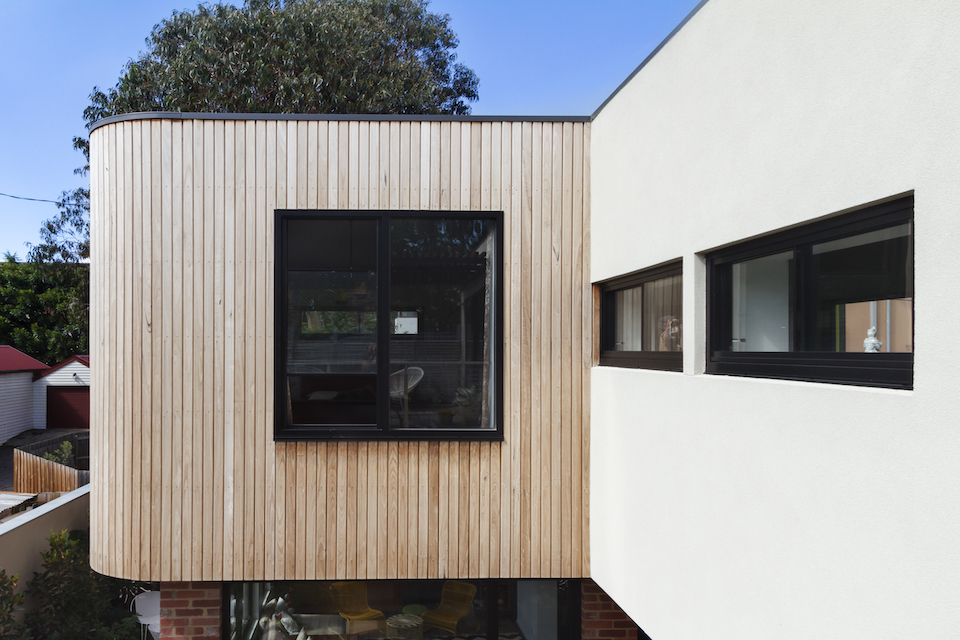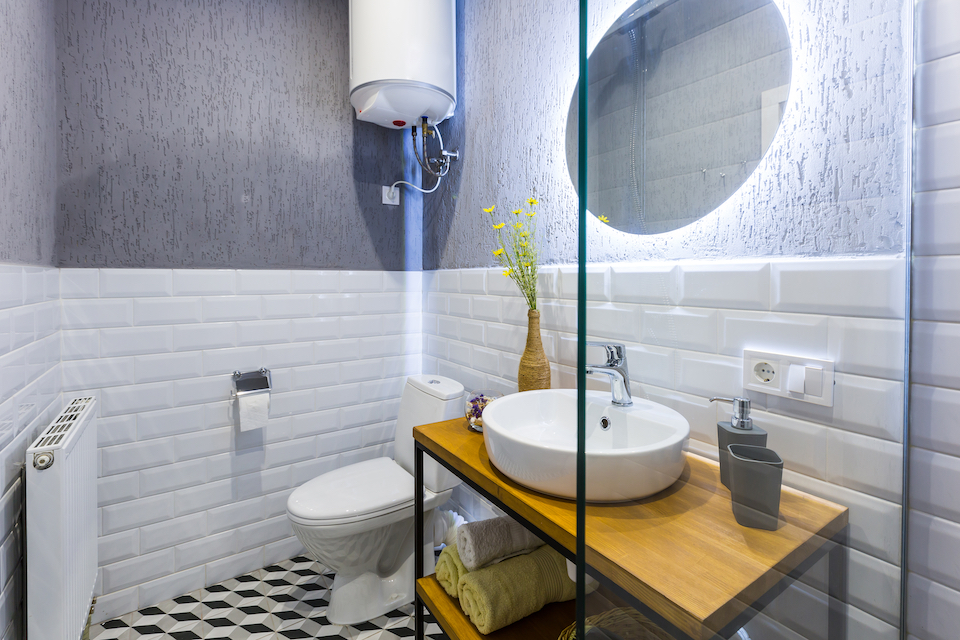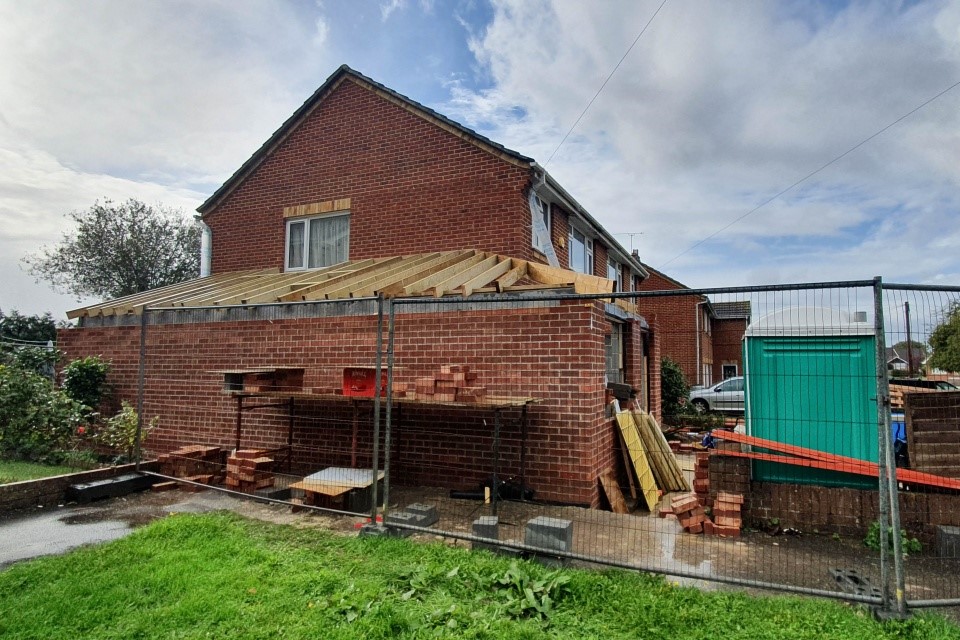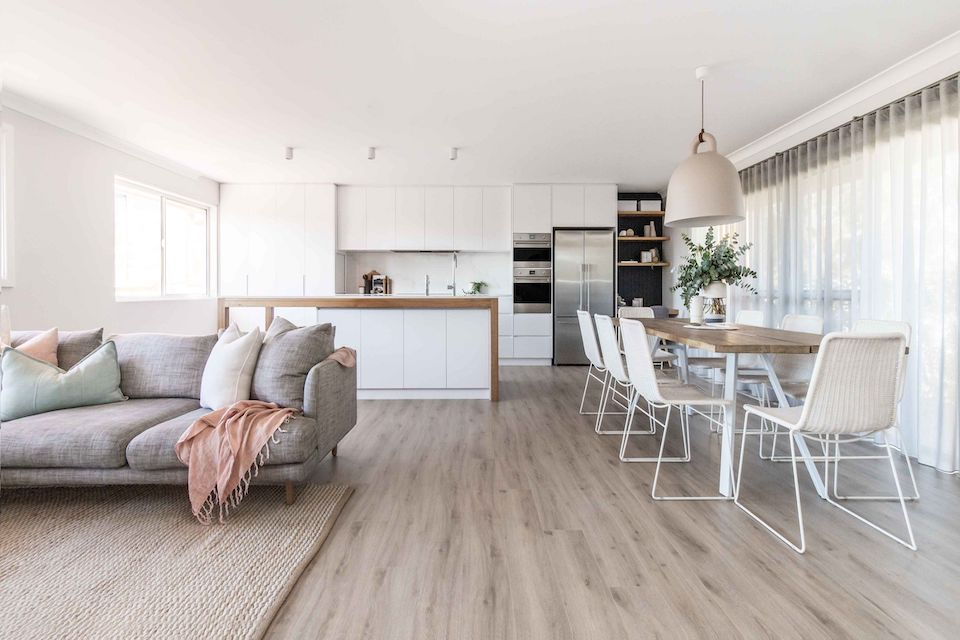How Much Does Cladding Cost?
The average cost of installing timber cladding will vary depending on several factors, such as the type of cladding used, the size of your home, and your location in the UK.
Those based in the London area can expect to pay more than people based in the North or other parts of the UK.
The most common types of timber cladding are oak, larch, and red cedar.
So what kind of costs are we looking at?
Oak timber cladding tends to cost around £20-£50 per square metre, larch costs around £10-£40 per square metre, and red cedar costs around £10-£65 per square metre.
Timber cladding can be installed with different profiles, and these various profiles will affect the costs.
Shiplap and tongue and groove are two of the most popular choices, and these tend to cost roughly the same at around £20-£60 per square metre. Waney lap and feather edge profiles and less common, and these cost around £10-£40 per square metre.
Let's consider some other factors...
The time that it takes to install the cladding will affect the overall cost of the job. It can be difficult to estimate the overall labour costs as every job is different. However, most contractors will charge around £150-£200 per day with the help of an assistant at around £80-£100.
The average time that it takes to install timber cladding is approximately three days, so you can expect the labour to cost around £600-£900 in total.
House Cladding Prices
Below is a table showing the prices you can expect for various types of timber cladding in different designs.
These are estimated costs per square metre and are based on installing the cladding to a three-bedroom home with a timeframe of around 2-5 days.
| Profile Type | Oak Cladding | Red Cedar Cladding | Larch Cladding | Labour Costs |
|---|---|---|---|---|
|
Shiplap
|
£45-£55 |
£30-£65 |
£20-£30 |
£400-£1500 |
|
Tongue & groove |
£40-£55 |
£35-£60 |
£20-£40 |
£400-£1500 |
|
Feather edge
|
£30-£30 |
£10-£60 |
£15-£20 |
£400-£1500 |
|
Waney lap
|
£20-£40 |
£15-£30 |
£10-£25 |
£400-£1500 |
- How Much Does Cladding Cost?
- What are the Supply Costs of Timber Cladding?
- What are the Additional Costs of Fitting Timber Cladding?
- Cost Affecting Factors
- Tradesmen Costs for Installing Timber Cladding
- Types of Timber Cladding
- Benefits of Timber Cladding
- How much Does It Cost to Remove Timber Cladding?
- FAQs
- Sources
What are the Supply Costs of Timber Cladding?
When it comes to the supply costs of timber cladding, the prices will vary depending on the material of the wood that you choose. The three most common materials used for timber cladding are oak, red cedar, and larch.
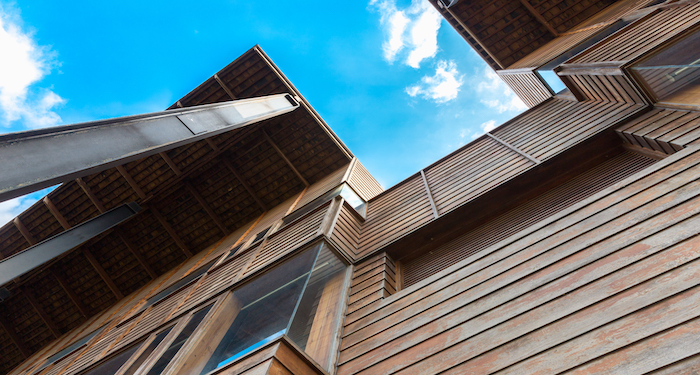
Below is a list of the supply costs for timber cladding. These are the costs for the materials only without factoring in the costs of the labour part of the work.
- Oak Timber Cladding - £20-£50 per square metre
- Red Cedar Timber Cladding - £10-£65 per square metre
- Larch Timber Cladding - £10-£40 per square metre
As these costs are based on a per square metre basis, you can see that the overall prices can increase quite significantly depending on the size of your home. The larger your home is, the more supplies you will need and, therefore, the higher the materials cost will be.
What are the Additional Costs of Fitting Timber Cladding?
When it comes to installing timber cladding on your home, there are several additional costs that you may need to consider. Below is a list of the additional things that you may need to budget for with this type of work:
Painting House Exterior
If you decide against timber cladding but still want to spruce up the exterior of your home, you may wish to consider painting the exterior walls of your property.
The overall cost for painting a house exterior will depend on several things, such as the type of paint job, the size of your home, and your location in the UK.
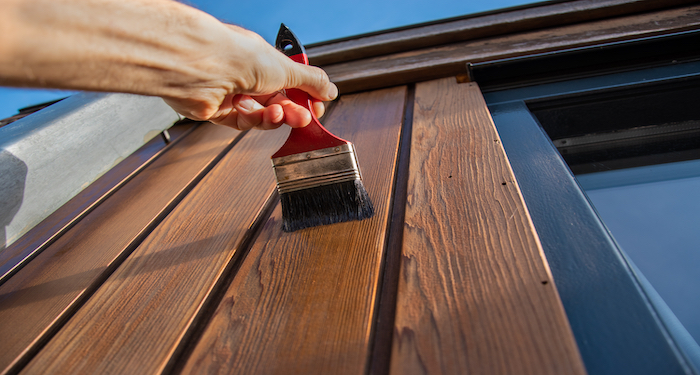
Render painting is usually around £600-£1200 whereas the cost of simply painting the exterior of your home is usually around £500-£1500.
For more information about the costs involved with painting the exterior of your home, please take a look at our exterior painting cost guide for further information.
Scaffolding
When it comes to fitting exterior cladding to your home, the work will usually require scaffolding. Some contractors may supply their own scaffolding as part of the work.
However, this is something that you will need to discuss with the contractors beforehand. If you need to hire scaffolding yourself for the job, then you can expect it to cost around £300-£700.
For more information on the cost involved with hiring scaffolding, check out our scaffolding cost guide.
Skip Hire
If you are completely re-doing the exterior of your home, then you may find that there is a lot of waste to be disposed of – especially if you are removing old cladding and replacing it with new cladding. Sometimes the contractors will take of the waste removal for you.
However, you may need to take care of the waste removal yourself on other occasions. If you need to remove a lot of waste, the best thing you can do is hire a skip.
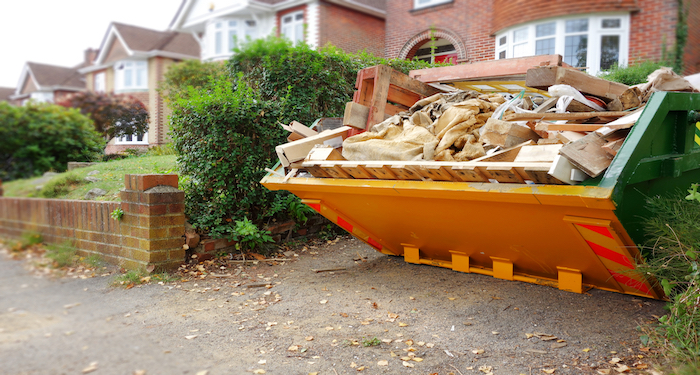
The cost of hiring a skip will vary depending on the size of the skip. For example, a 2-yard skip will cost around £70-£100, and a 10-yard skip will cost about £220-£450.
For more information on the prices that you can expect for hiring a skip, please take a look at our skip hire cost guide.
Cost Affecting Factors
Several factors can affect the cost of installing timber cladding on your home. Below is a list of the main factors that may affect the overall cost of the job:
Size of Home
The amount of cladding that you need will depend on the size of your home and the size of the area that you want to install the cladding on. Some people would like to have the entire exterior of the house fitted with cladding, whereas others prefer to install cladding on just one wall or a small section of the home.
Nevertheless, the amount of cladding that you need will have an impact on the overall cost of the project.
Materials Used
The type of timber you choose for your timber cladding will be one of the most significant cost affecting factors. Hardwood is more expensive than softwood. This is due to the fact that softwood is in much greater supply than softwood.
Timber cladding made from oak ranges from around £20-£50 per square metre, whereas softwoods like larch range from approximately £10-£40 per square metre.
Location of Property
The location of your property may impact the overall cost of having cladding installed on your home. Homeowners based in and around the London area can expect to pay more for the cost of labour than those based in the North or other parts of the UK.
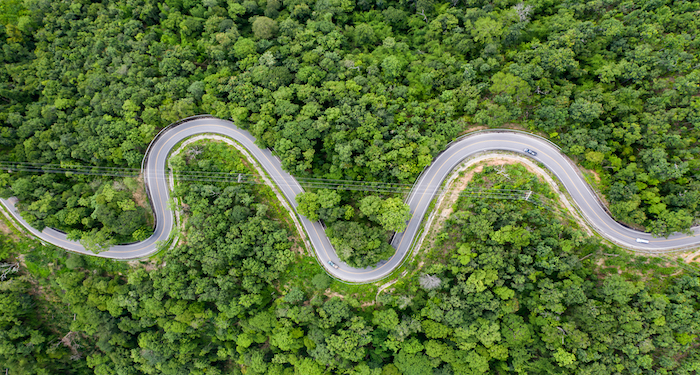
Companies based in London and the South East of England tend to have higher overheads, and this will reflect in their prices.
Tradesmen Costs for Installing Timber Cladding
The cost for labour for a timber cladding installation will vary depending on the complexity of the job, the size and shape of the house, and your location within the UK.
If you are hiring professional cladding specialists to complete the work for you, then you will most likely pay one single price for the supply and fit. However, if you buy the cladding separately, you will need to discuss fees with local contractors who can fit the cladding for you.
The average price you can expect to pay for the labour side of this job is around £150-£200 per day for the main installer and then approximately £80-£100 per day for any additional labourers who need to work on the job.
You can usually expect the work to take around 2-5 days. However, this will depend on the complexity of the job, the size of your home, and the number of contractors that are working on the project.
Types of Timber Cladding
The three main types of timber cladding are oak, red cedar and larch. Below is a list of the advantages and disadvantages of these types of timber cladding with some information about the characteristics of each type:
Oak Timber Cladding
Oak is a hardwood, and it is one of the most durable types of timber used for exterior cladding. It is both resilient and long-lasting, and there are various grades to choose from. However, the luxurious nature of this type of timber comes at a higher price than other cladding types.
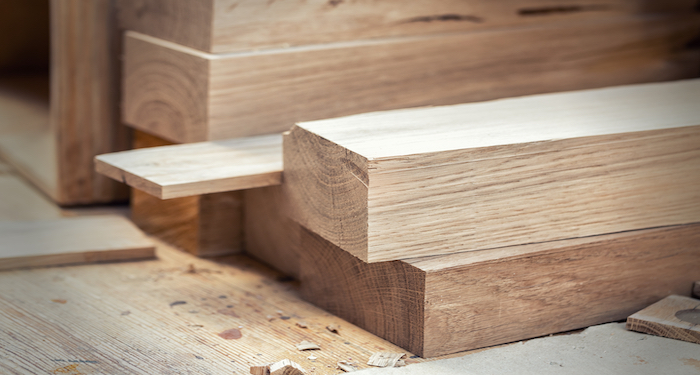
Pros
- Very strong and durable
- Resistant to fungal attacks
- Beautiful appearance with a prominent grain
Cons
- High price point
- The original colour will fade due to weather if left untreated
- Heavier than other types of cladding
Red Cedar Timber Cladding
Red cedar is a softwood, and this type of cladding can come from trees grown in the UK and Canada. Prices for this type of timber can vary. The UK variety is much cheaper than the Canadian variety as the price will reflect the costs of importing the wood.
Pros
- Very durable
- Beautiful appearance with fine grain
- Lighter than oak
- Weather-resistant
Cons
- It can be expensive if imported
- The colour will fade to silver if left untreated
- British red cedar can be more knotty and may appear more brownish in colour than red
Larch Timber Cladding
Larch is also a softwood, and this is a very popular cladding material. This type of wood can also be grown in the UK, or it can be imported from places such as Siberia.
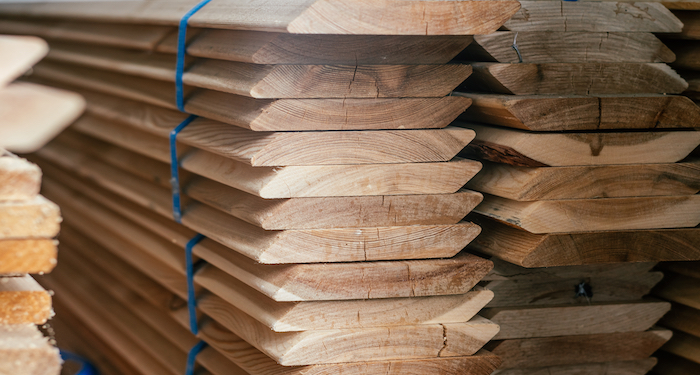
Again, the imported variety is more expensive than the homegrown UK variety due to the transportation costs.
Pros
- Robust and hardwearing
- Relatively cheap in comparison to other cladding materials
- Choice of homegrown or imported varieties
- Various grades to choose from
Cons
- British larch can be quite knotty compared to imported varieties
- May split so drilled pilot holes are needed
- Knots may become loose, and this can cause problems over time
Benefits of Timber Cladding
There are many benefits of choosing timber cladding for your home. Below is a list of the main advantages of this type of work:
Weather Protection
Cladding is perfect for protecting your property from the elements. Timber cladding has been used for many centuries in various styles and forms, and it has only gotten better with time. Modern cladding is very strong and resilient.
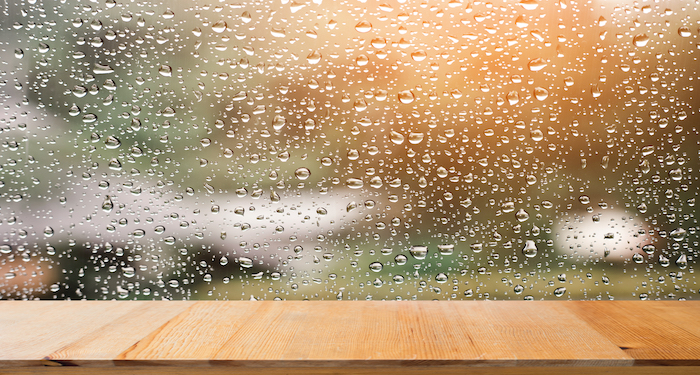
Shiplap cladding has a great water runoff style that helps to keep water away from the main building. Tongue and groove cladding provides a very strong and stable protective surface with interlocking joints. Both types of cladding are perfect for protecting homes that are exposed to harsh weather.
Long-Lasting
The specific lifespan of timber cladding will vary depending on the type of timber. Oak and cedar cladding can have a lifespan of up to fifty years or more, proving it is maintained well.
Oak is a hardwood, so it is naturally strong and durable. Cedar and larch both have a natural resistance to water and can make excellent cladding materials that will last many years with the proper maintenance.
Natural Product
Since timber is a renewable product, it provides an ecologically friendly way to protect your home from the weather. Most manufacturers will provide a source certification for their timber cladding that guarantees it has come from a sustainable supply.
If you choose to remove your timber cladding, the timber materials are also fully recyclable.
Aesthetic Appearance
One of the most appealing things about timber cladding is its aesthetic appearance. There are numerous hues and shades to choose from, and you also have the option to have your cladding installed vertically or horizontally.
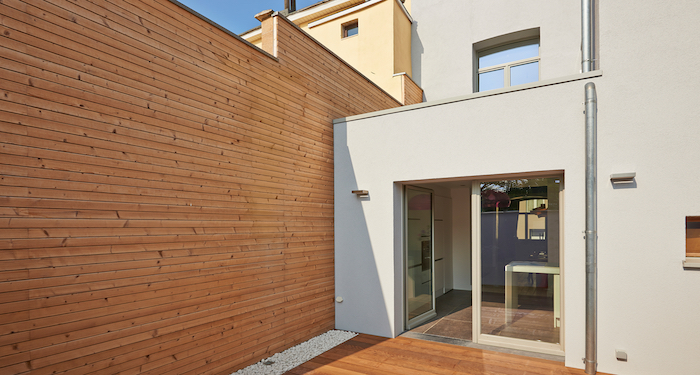
This means that the possibilities to enhance the exterior appearance of your home are quite varied.
Insulation
Timber cladding can provide some additional insulation to your home. This is because the timber provides natural insulative properties. As well as thermal insulation, timber cladding can also offer a great deal of sound insulation.
How much Does It Cost to Remove Timber Cladding?
If the timber cladding on your property is quite old or looking a bit worse for wear, then you may need to get it removed so that you can replace it or otherwise redecorate the exterior of your home.
Alternatively, you may also have bought a property with that has timber cladding installed, and it may not be to your taste. In which case, you would most likely want to have it removed.
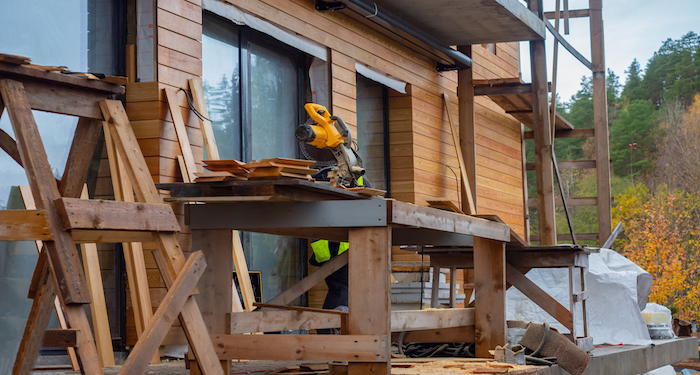
You may not need to hire a cladding specialist to remove your timber cladding for you. Most of the time, a general builder will be capable of completing this work for you.
However, you should ensure that the builder has some experience in removing timber cladding, as it is essential that there is no damage to the exterior walls of your property in the process.
A general builder will usually charge around £100-£200 per day to complete this work for you.
Most of the time, builders will work in pairs, or they will bring an assistant along with them to help with the project. Additional labourers will usually cost around £80-£100 per day.
The amount you pay for the timber cladding removal will depend on the amount of cladding that needs to be removed, the length of time it takes to remove it, and the number of people working on the job.
FAQs
Q: How long does timber cladding last?
A: The longevity of timber cladding will vary depending on the type of timber cladding that you choose and how well it is maintained. Timber cladding that is well-treated and well-maintained should last for around 40-60 years on average.
However, this will depend on where the property is located and how exposed it is. Houses that are located by the coast or in a mountainous area may be more exposed to extreme weather conditions. In these cases, the cladding may need to be changed or updated more frequently.
Q: Which timber cladding is best?
A: There are several different types of timber cladding. Oak is seen to be the best material for timber cladding as this is a very strong wood and provides a great deal of protection against harsh weather.
Oak is also the longest lasting material for timber cladding. So, despite its higher price point, it can end up being a much better investment over time.
Q: What are the differences between hardwood and softwood timber cladding?
A: Hardwood and softwood can be quite confusing as these are not terms to describe the strength of the wood. Hardwood trees produce seeds that are protected with a tough outer shell, such as a chestnut or an acorn. However, softwood trees like red cedar produce seeds that are uncoated.
Hardwood cladding tends to be denser than softwood and, therefore, is usually much heavier. Both types of wood are very durable and weather resistant, so the choice between the two tends to lie in personal preference.
Q: Does my timber cladding need to be treated before the installation?
A: You can purchase Pre-treated timber, and this can make the maintenance process much easier. However, if you buy untreated timber, you have several options. You can either leave it to weather naturally, paint the wood, or stain it.
If you want to paint or stain the wood, it is best to do this before the installation to ensure you get an even and full coverage. It is also easier to apply treatment in the form of paint or stain when the boards are laid flat rather than when they're attached to the property.
Q: Why do I need to use stainless steel fixings for my exterior cladding?
A: Red cedar and oak both have very high levels of tannin. This is corrosive when it comes in contact with ferrous metals. With this in mind, it is advised that stainless steel or galvanised screws and nails be used to fix these types of timber cladding.
If tannin does happen to react with the fixings, this can cause stains on the wood or the fixings may corrode. This means that the cladding will become loose and may even detach completely.

